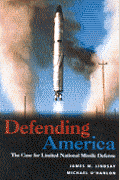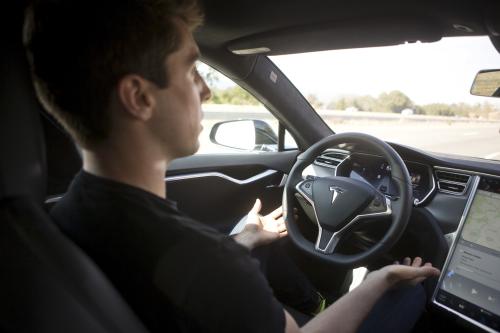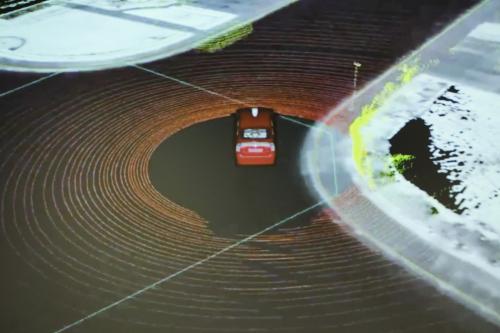After a six-month investigation, the National Highway Traffic Safety Administration (NHTSA) recently finished its final report on the fatal collision of a Tesla Model S in its semi-autonomous “Autopilot” mode. The report determined that no recurring failure had occurred in either the vehicle’s software or its hardware. According to NHTSA, driver inattention remains an issue when semi-autonomous features are engaged, but the agency also noted that Tesla issued software updates to mitigate this problem. Furthermore, the report observed a significant reduction in the crash rate for cars with the automatic steering capability. Semi-autonomous features have proven to improve vehicle safety so long as drivers continue to pay attention when vehicles or other objects suddenly enter their path. As automakers like Tesla continue to push features that give cars limited autonomy, they must also account for the limitations of human drivers.
Sensors inside and out
The May 2016 Tesla collision made headlines for being the first fatal car crash in a semi-autonomous vehicle. A semi-autonomous vehicle cannot drive itself at all times, but does automate some driving functions under ideal conditions like highway driving. Despite calling the feature Autopilot, Tesla expects drivers to keep both hands on the steering wheel at all times while operating the vehicle. To reinforce this precaution, the car issues both visual and audible warnings, followed by deceleration if the driver fails to heed the warnings. The new software update introduced a new “strikeout” function that prevents drivers from engaging Autopilot mode for the duration of a ride if they fail to respond to alerts. In addition to the sensors outside of the vehicle that respond to changes in traffic speed, sensors inside the car tracking human activity will ultimately keep drivers safe.
Further burnishing Tesla’s safety record was NHTSA analysis of vehicle crash data before and after the Autopilot feature was launched in October 2015. The rate dropped from 1.3 crashes per million vehicle miles traveled to .8 crashes per million miles, a 40 percent decrease. This improvement demonstrates the safety benefits of semi-autonomous features like autopilot despite the risks of human inattention. Tesla founder Elon Musk has chosen to release semi-autonomous features incrementally to improve safety rather than wait to release a fully autonomous vehicle that needs no human input. Improving vehicle safety in the near term is a worthy goal, so long as drivers recognize the limitations of semi-autonomous safety features and their own limitations in paying attention.
Educating drivers on safety features
Tesla is not the only car manufacturer to market cutting-edge safety features of their cars. Automatic emergency braking, auto-steering, and traffic-aware cruise control will improve safety if drivers know how and when to use them. Car dealerships play a role in educating car buyers, but a study conducted by researchers at the Massachusetts Institute of Technology showed that most salesmen were themselves unfamiliar with how new safety features worked. Car manuals provide this information to drivers who read them carefully, as do digital dashboards inside cars that display warnings and indications when features are activated. If manufacturers introduce advanced safety features to stay competitive, then they must also train drivers on how to use features in order to stay safe.
Transportation regulators that seek to reduce the number of traffic fatalities (38,300 in the U.S. in 2015) should encourage the adoption of new safety features. As the Tesla crash and subsequent NHTSA report showed, these features work best under normal driving conditions, but there are many exceptions that require a human driver to intervene. A driver might not have enough time between a computer alert and an imminent collision to fully regain control, so constant attention is required, and sensors in the steering wheel ensure that drivers pay attention to changing traffic conditions. Until automakers develop fully autonomous cars without any driving limitations, they will need to use technology to overcome human limitations.











Commentary
Semi-autonomous vehicles must watch the road and the driver
January 30, 2017